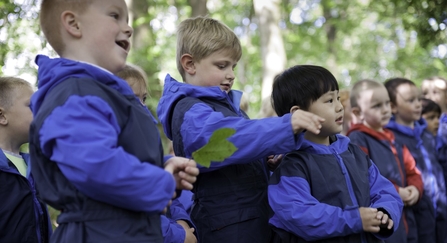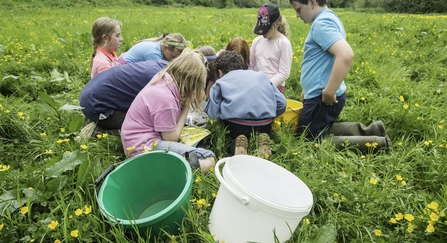Today, a new educational pack, Nature’s Climate Heroes, is launched to help primary school children understand the connections between the natural world, a changing climate, and people.
Solutions to address climate change and wildlife loss should be fundamental to children’s education in the 21st century, say The Wildlife Trusts.
The new handbook is designed to help teachers of children aged 7–11 and has been funded by players of People’s Postcode Lottery.
The project aims to address how climate change is taught in primary education by:
- Changing the focus of climate change from a scary and overwhelming subject to something that can be tackled through collective action.
- Providing teachers with a structured and comprehensive guide to deliver lessons about how human activities are connected to the changing climate, and why the restoration of nature is fundamental to our future.
- Empowering children to take small but collectively significant actions in their communities.
Fiona Groves, Education and Learning Manager at The Wildlife Trusts, says:
“The interlinked climate and ecological crises present the biggest challenges ever faced by humanity. This can be extremely daunting, especially for children with their whole lives ahead of them.
“In this crucial decade for determining the future climate, we want children and young people to understand how nature can help us while empowering them to take action in their communities. It’s so important teachers have access to engaging resources that give them confidence to teach these issues and that children, as well as adults, feel able to make a difference.”
Laura Chow, Head of Charities at People’s Postcode Lottery, says:
“Nature can be our biggest ally in helping us fight back against climate change. I’m delighted funding raised by our players will allow pupils across the country to discover these climate heroes, helping to develop a lifelong understanding and appreciation of our natural world and the role it can play in helping us tackle the issue.”
The guide features four of nature’s “superheroes” that are brilliant for capturing and storing carbon:
- Seagrass – which can capture carbon up to 35 times faster than tropical rainforests, and accounts for 10% of the ocean’s total burial of carbon, despite covering less than 0.2% of the ocean floor.
- Saltmarsh – which continually captures and stores vast amounts of carbon, as well as protecting communities from the effects of extreme events such as flooding and storm surges.
- Leaves – the lungs of our planet hidden in plain sight, they are found everywhere on trees and plants. Leaves remove carbon from the atmosphere through photosynthesis and store it in their tissues until eventually they die and become part of soil.
- Soil – which absorbs and stores carbon through dead plant matter for centuries. Includes peatlands which are the largest natural terrestrial carbon store.



